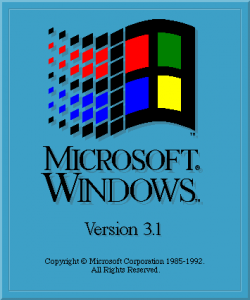
We’ve all heard a lot of bad news about Microsoft over the past decade, especially the past few years. Security problems, broken hardware drivers, annoying interface changes, confusing security features, etc.
It’s gotten to the point where it’s tough to think of anything good about Windows, aside from the fact that “it’s there” and there’s a lot of games for it.
But I see some good things about Windows where Microsoft has done the right thing, and done it consistently. Let’s look at those.
1. Backwards compatibility
Let’s say you’re running a business. You have a very important application that’s 20 years old, no longer supported, and there’s no budget to upgrade. What to do?
Well if it was written for Windows (or even Microsoft’s previous operating system, DOS) there’s a good chance it still works perfectly fine today. In fact, if it doesn’t require any special hardware, it’s basically guaranteed to work. This saves you a lot of money on hiring people to write a new application.
Backwards compatibility is a key feature of Windows. Even on a 64 bit Windows 7 machine, you can run applications designed for 32-bit Windows 2000 by design.
I’m not sure if it’s more strange that Microsoft considers this a mandatory feature, or that Linux and Apple don’t bother. There’s certainly no technical reason NOT to support old applications, so this is definitely something Windows gets right.
2. Forwards compatibility
With the latest Visual Studio you can still write applications for Windows 2000 out of the box. Although the underlying architecture of Windows has changed quite a bit over the years, the core APIs are binary compatible.
Sure, it takes some effort to avoid the convenient new APIs introduced in XP and Vista, but it’s by no means impossible.
3. Free Service Packs
Whereas Apple charges for small upgrades to the OS, Microsoft gives them away for free in the form of service packs. These upgrades are designed to change as little as possible under the hood, but bring in new features, new applications, and security updates.
And while some service packs have presented problems, Microsoft has usually been quick to fix these issues with incremental patches through Windows Update (aka Microsoft Update.)
4. Hardware drivers
Something most Windows users don’t even notice — when they work — is hardware drivers. Windows consistently ships with an amazing array of hardware drivers for just about everything. The major complaints tend to be printers and WiFi, where the manufacturer may need to supply something specific.
But this is one area where Windows really shines compared to the competition. On Linux, hardware drivers can be impossible to find or tricky to install. Linux users often encounter issues with graphics *cough* ATI *cough*. Apple avoids the problem entirely by shipping only custom hardware; an easy solution that bypasses the issue.
5. Multimedia and server in one OS
Linux is optimized for use as a server. Mac OS is optimized for multimedia.
But Windows? It does a pretty good job at both, out of the box, without (much) configuration. Somehow they’ve optimized the timing in the kernel to allow for both. This is not as trivial as it sounds.
Multimedia requires processing a rapid fire of tiny pieces of information. Servers require processing large chunks of information at unpredictable intervals. It’s not easy to adjust your timing to do both, but Windows pulls this off without a hitch.
Conclusion:
Windows isn’t all bad! Microsoft goes out of their way to make Windows a stable, consistent OS that runs a wide variety of applications. Keep this in mind next time a UAC prompt makes you want to put your fist through your monitor.
